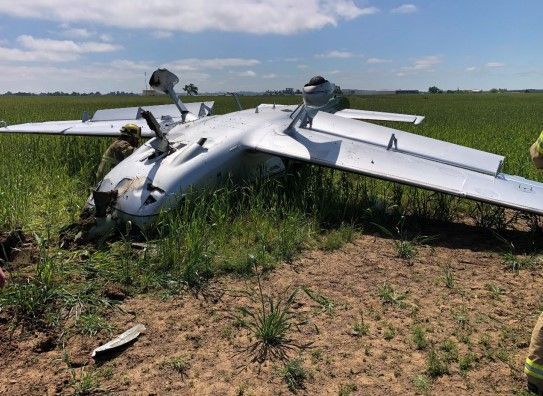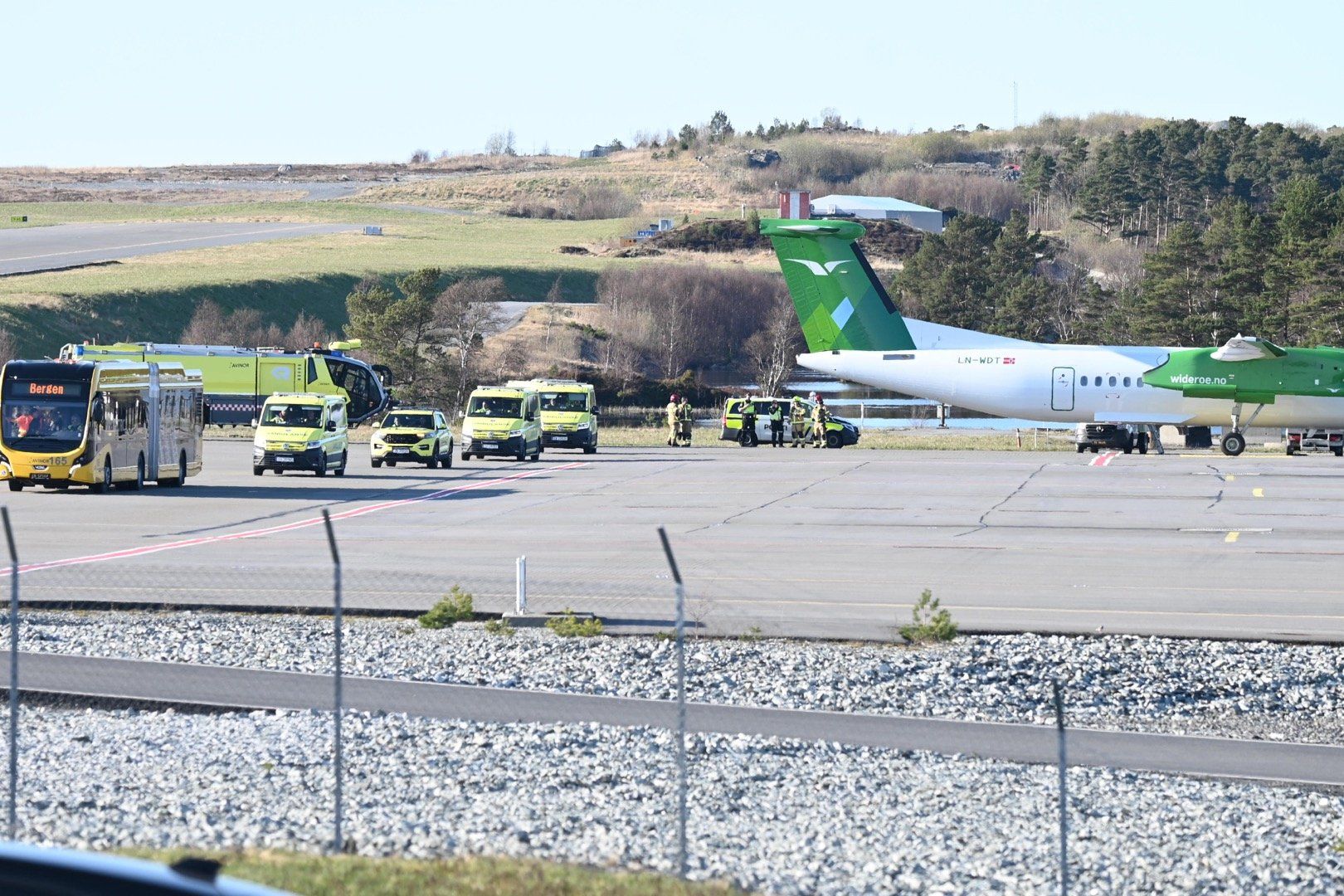ARFF Daily News
Published on:
Monday the 22nd of April, 2024
Emergency crews rescue three people from flipped aircraft in Paso Robles
Two patients received on-site treatment, with one being transported to the hospital in stable condition
Paso Robles Fire and Emergency Services responded to an aircraft emergency at Paso Robles Municipal Airport, located at 4900 Wing Way, on Friday at 11:24 a.m.
Upon arrival, firefighters discovered an aircraft 300 feet off the runway, flipped over, and resting on its roof. Three individuals trapped inside required assistance. Firefighters observed fuel leaking from both wings, which they promptly contained while aiding the passengers. Two patients received on-site treatment, with one being transported to the hospital in stable condition.
The response effort involved two fire engines, a truck, a heavy rescue vehicle, an airport crash rescue unit, and one Battalion Chief from Paso Robles Fire and Emergency Services. Additionally, under the city’s automatic aid agreement, one battalion chief and one fire engine responded from Cal Fire/SLO County. A total of 15 firefighters, along with support from the Paso Robles Police Department and San Luis Ambulance Service, collaborated to manage the situation.
The scene was turned over to the National Transportation Safety Board for further investigation.

Got an emergency message from Widerøe-flyer: had engine problems in the air
Tore Roth Stranden, Magnhild Synnøve, Mostad Ada, Ipek Lunde
The emergency services are at Flesland on Sunday evening after a passenger plane made an emergency landing. - Both flames and smoke may have been observed, say the police.
BERGEN [ BA ]: - We received a message about a plane coming in with engine problems. Now it has landed safely, says guard commander at 110 West, Håkon Myking, to BA.
The police report that many resources were sent to the airport after they received an emergency message from the passenger plane.
According to the Central Rescue Center Southern Norway, it is a Widerøe plane that reported technical problems in one of two engines.
- The plane has now landed safely, but smoke is observed from an engine, they reported at 1757.
The plane had then landed three minutes ago.
58 people on board
Avinor initiated full preparedness when the message from the Widerøe plane came in. After a short time it had landed and the situation de-escalated.
Operations manager Stein Rune Halleraker in the police states that the emergency call was about engine problems and smoke. There were 58 people on board, and no one is said to have been physically injured.
Of these, four are crew members.
- The plane is now being evacuated and the people are being cared for by police and health personnel on site.
Halleraker tells BA that both flames and smoke may have been observed at one point.
- So this has been a real incident. Although no one has been physically injured, it must have been quite frightening and the plane has made an emergency landing.
Press officer in Widerøe, Catharina Solli, has informed Nettavisen that there must have been smoke inside the cabin.
The police are now focusing on taking care of those involved and trying to find out what happened.
Had to turn around in Haugesund
Solli in Widerøe states that the plane took off from Flesland at 1721, on its way to Kristiansand. Due to the development of smoke, the captain chose to turn around.
Data from FlightRadar shows that the plane got as far south as Haugesund, before it had to turn around.
- The passengers are now looked after at Flesland and rebooked. It is normal procedure for the captain to debrief with the passengers afterwards, which also gives us the opportunity to follow up more closely with those passengers who need it, says Solli to Nettavisen.
She informs BA that the passengers are scheduled to get a seat on the new Widerøe flight on Sunday evening.
- On this flight there were 54 passengers, and the planes are 78-seat planes. If there are enough empty seats, they can be booked for the next departure if it is not full.
Dagbladet has received a photo from a tipster which is said to have been taken inside the plane in question. The image shows the development of smoke, and a person with a smoke mask inside the cabin.
At 18.10, the 110 center was able to report that the fire service was canceling the mission.
https://www.h-avis.no/fikk-nodmelding-fra-wideroe-fly-hadde-motorproblemer-i-luften/s/5-62-1692533


NTSB Final Report: Hagerty Glasair Super IIS-TD
During The Climb, About 4,500 Ft Mean Sea Level, The Engine Began To Run Rough, And Shortly Thereafter Lost All Power
Location: Jasper, Georgia Accident Number: ERA23LA063
Date & Time: November 4, 2022, 15:00 Local Registration: N430JV
Aircraft: Hagerty Glasair Super IIS-TD Aircraft Damage: Substantial
Defining Event: Sys/Comp malf/fail (non-power) Injuries: 1 None
Flight Conducted Under: Part 91: General aviation - Personal
Analysis: The pilot reported that during the climb, about 4,500 ft mean sea level, the engine began to run rough, and shortly thereafter lost all power. The pilot immediately turned back toward the departure airport, which was about 5 miles from his position. He began troubleshooting the loss of power, but power was not restored. The pilot was able to glide to the airport; however, in a right turn to align with the runway, the pilot felt the onset of an aerodynamic stall. He leveled the wings, the airplane overshot the runway, descended abruptly, and impacted a grass area hard next to the runway. The left wing and fuselage sustained substantial damage.
A postaccident test run of the engine revealed it produced normal power with the electric fuel pump on, but would not operate with only the engine-driven fuel pump. Further examination and disassembly of the engine-driven fuel pump revealed no anomalies that would have explained its inability to pump fuel.
The pilot reported that in the climb he turned off the electric fuel pump and, after the loss of power, he did not turn the pump back on, despite the owner’s manual instructing pilots to use the electric fuel pump following a loss of engine power. Had the pilot turned the electric fuel pump on, power likely would have been restored.
Probable Cause and Findings: The National Transportation Safety Board determines the probable cause(s) of this accident to be -- The loss of engine power due to the failure of the engine-driven fuel pump and the pilot’s failure to use the electric fuel pump, which resulted in a forced, hard landing.
FMI: www.ntsb.gov
NTSB Final Report: Bell 206B
Helicopter Entered An Uncommanded, Continuous Right Rotation About The Vertical Axis
Location: Stockton, California Accident Number: WPR22LA221
Date & Time: June 17, 2022, 06:15 Local Registration: N90326
Aircraft: Bell 206B Aircraft Damage: Substantial
Defining Event: Unknown or undetermined Injuries: 1 None
Flight Conducted Under: Part 91: General aviation - Positioning
Analysis: The pilot had departed his home base to relocate the helicopter for an upcoming aerial application job when he felt a vibration and heard a bang, followed immediately by an uncommanded right yaw. While performing a precautionary landing to an orchard, the helicopter entered an uncommanded, continuous right rotation about the vertical axis. The pilot rolled off the throttle and increased collective to cushion the landing, but the helicopter continued the right rotation as it touched down, which resulted in the helicopter rolling over onto its left side.
The helicopter sustained substantial damage to the fuselage, transmission, main rotor, and tail rotor assemblies. Fragments of one tail rotor blade was recovered about 2,000 ft from the main wreckage. The pilot stated that he was unsure if a bird had struck the tail rotor during flight. Postaccident examination of the tail rotor assembly revealed both blades were damaged, and one blade fractured and separated from the hub.
The tail rotor blades were shipped to the National Transportation Safety Board (NTSB) materials laboratory, and subsequently to the manufacturer’s laboratory for further examination. The combined examinations revealed translaminar overstress fractures of both tail rotor blades, with one blade exhibiting a leading-edge high-energy impact. Both blades exhibited an unidentified foreign material transfer onto their leading edges. A small amount of nitrile rubber was found lodged into the end of one blade; however, its origin was undetermined.
Probable Cause and Findings: The National Transportation Safety Board determines the probable cause(s) of this accident to be -- Tail rotor blade impact with an unidentified object, which resulted in the loss of control and subsequent rollover of the helicopter.
FMI: www.ntsb.gov
NTSB Final Report: Alexander Schleicher GMBH & CO ASW 27-18
Prior To The Accident Flight, (Pilot) Had Not Flown In Over 90 Days
Location: Polk City, Florida Accident Number: ERA24LA119
Date & Time: February 15, 2024, 17:10 Local Registration: N429SH
Aircraft: Alexander Schleicher GMBH & CO ASW 27-18 Aircraft Damage: Substantial
Defining Event: Loss of lift Injuries: 1 None
Flight Conducted Under: Part 91: General aviation - Personal
Analysis: The pilot of the glider reported that prior to the accident flight, he had not flown in over 90 days. The purpose of the accident flight was to refamiliarize himself with the tasking area of an upcoming soaring contest, with a general aim to stay within gliding distance of the departure gliderport. For about 2 hours, the pilot flew south of the gliderport at altitudes between 3,000 to 4,000 ft above ground level. He then encountered weaker soaring conditions and miscalculated his altitude by 300 ft due to a discrepancy between the glider’s primary altimeter and the altitude displayed on his GPS/moving map computer. By that time, he was too low to glide back to the gliderport and elected to land in a field about 5 miles southeast of it. During the landing, the left wing struck a fence and sustained substantial damage. The pilot added that there were no preimpact mechanical malfunctions with the glider.
Probable Cause and Findings: The National Transportation Safety Board determines the probable cause(s) of this accident to be -- The glider pilot’s misjudged altitude, which resulted in an off-airport landing and collision with a fence.
FMI: www.ntsb.gov

Today in History
50 Years ago today: On 22 April 1974 a Pan American Boeing 707 flew into a mountain while on approach to Denpasar; killing all 107 occupants.
Date: Monday 22 April 1974
Time: 22:26
Type: Boeing 707-321B
Owner/operator: Pan American World Airways (Pan Am)
Registration: N446PA
MSN: 19268/544
Year of manufacture: 1966
Total airframe hrs: 28000 hours
Cycles: 9150 flights
Engine model: Pratt & Whitney JT3D-3B
Fatalities: Fatalities: 107 / Occupants: 107
Aircraft damage: Destroyed, written off
Category: Accident
Location: 68 km NW of Denpasar - Indonesia
Phase: Approach
Nature: Passenger - Scheduled
Departure airport: Hong Kong-Kai Tak International Airport (HKG/VHHH)
Destination airport: Denpasar-Ngurah Rai Bali International Airport (DPS/WADD)
Confidence Rating: Accident investigation report completed and information captured
Narrative:
A Boeing 707-321B passenger plane, N446PA, named "Clipper Climax", was destroyed when it crashed into the side of a mountain near Denpasar, Indonesia.
Flight PA-812 was a scheduled international flight from Hong Kong (HKG) to Sydney (SYD), Australia with an intermediate stop at Denpasar (DPS), Bali.
The crew prepared for an approach to runway 09 at Denpasar. The airplane descended to an altitude of 2500 feet when it flew into the side of a mountain.
It appeared that the crew had initiated the let-down procedure after one of the ADF needles swung. The other needle remained steady, but the crew assumed that they were over the beacon when the aircraft was still about 30 NM North of the beacon.
PROBABLE CAUSE: "The premature execution of a right-hand turn to join the 263 degrees outbound track which was based on the indication given by only one of the ADFs while the other one was still in steady condition"

Mailing Address
Subscribe to our newsletter
Contact Us
We will get back to you as soon as possible.
Please try again later.
